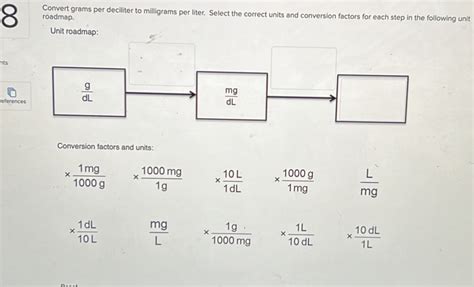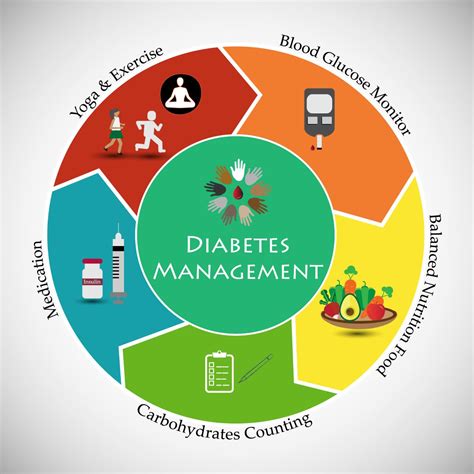Intro
Understand blood sugar units, including mmol/L and mg/dL, to manage diabetes and glucose levels effectively, converting and tracking blood glucose measurements with ease.
The importance of understanding blood sugar units cannot be overstated, particularly for individuals living with diabetes or those who are at risk of developing the condition. Blood sugar levels are a crucial indicator of overall health, and being able to interpret these levels is essential for managing the condition effectively. In this article, we will delve into the world of blood sugar units, exploring what they mean, how they are measured, and why they are vital for maintaining good health.
For individuals with diabetes, monitoring blood sugar levels is a daily routine that involves pricking their fingers to collect a blood sample, which is then inserted into a glucose meter to obtain a reading. This reading is typically expressed in milligrams per deciliter (mg/dL) or millimoles per liter (mmol/L), which can be confusing for those who are not familiar with these units. Understanding the difference between these units and how to convert between them is crucial for making informed decisions about diabetes management.
The concept of blood sugar units may seem straightforward, but it can be complex, especially for those who are new to diabetes management. With the rise of digital health technologies, including continuous glucose monitoring systems and mobile apps, the way we track and interpret blood sugar levels is evolving rapidly. As a result, it is more important than ever to have a solid understanding of blood sugar units and how they relate to overall health.
Introduction to Blood Sugar Units

Blood sugar units are used to measure the amount of glucose present in the blood. Glucose is a type of sugar that is found naturally in the blood and is an essential source of energy for the body's cells. In individuals with diabetes, the body is either unable to produce enough insulin, a hormone that regulates blood sugar levels, or is unable to use insulin effectively. As a result, blood sugar levels can become elevated, leading to a range of health complications.
The two most common units used to measure blood sugar levels are milligrams per deciliter (mg/dL) and millimoles per liter (mmol/L). In the United States, mg/dL is the most commonly used unit, while in other parts of the world, mmol/L is more widely used. Understanding the difference between these units and how to convert between them is essential for individuals with diabetes who may need to communicate with healthcare providers or access medical resources in different countries.
Understanding Milligrams per Deciliter (mg/dL)

Milligrams per deciliter (mg/dL) is a unit of measurement that expresses the amount of glucose present in a deciliter (dL) of blood. A deciliter is equal to 100 milliliters (mL) or one-tenth of a liter. In the context of blood sugar levels, mg/dL is used to measure the amount of glucose present in the blood, with higher values indicating higher blood sugar levels.
For example, a blood sugar reading of 120 mg/dL indicates that there are 120 milligrams of glucose present in every deciliter of blood. This value is considered to be within the normal range for individuals without diabetes, although it may be elevated for individuals with diabetes who are taking medication or insulin to manage their condition.
Normal Blood Sugar Ranges in mg/dL
The following are the normal blood sugar ranges in mg/dL: * Fasting: 70-99 mg/dL * Postprandial (after eating): Less than 140 mg/dL * Bedtime: 100-140 mg/dLThese ranges are general guidelines and may vary depending on individual factors, such as age, physical activity level, and medical conditions. It is essential to consult with a healthcare provider to determine the optimal blood sugar ranges for your specific situation.
Understanding Millimoles per Liter (mmol/L)

Millimoles per liter (mmol/L) is another unit of measurement used to express blood sugar levels. This unit is commonly used in countries outside of the United States and is considered to be more intuitive than mg/dL. In mmol/L, the amount of glucose present in the blood is expressed in millimoles (mM) per liter (L) of blood.
For example, a blood sugar reading of 6.6 mmol/L indicates that there are 6.6 millimoles of glucose present in every liter of blood. This value is equivalent to 120 mg/dL, which is considered to be within the normal range for individuals without diabetes.
Converting between mg/dL and mmol/L
Converting between mg/dL and mmol/L is straightforward, using the following conversion factor: 1 mmol/L = 18 mg/dLTo convert from mg/dL to mmol/L, divide the value in mg/dL by 18. For example: 120 mg/dL ÷ 18 = 6.6 mmol/L
To convert from mmol/L to mg/dL, multiply the value in mmol/L by 18. For example: 6.6 mmol/L × 18 = 120 mg/dL
Importance of Blood Sugar Units in Diabetes Management

Understanding blood sugar units is essential for effective diabetes management. By monitoring blood sugar levels and interpreting the results, individuals with diabetes can make informed decisions about their treatment plan, including medication, insulin, and lifestyle modifications.
The following are some key benefits of understanding blood sugar units in diabetes management:
- Improved glycemic control: By monitoring blood sugar levels and adjusting treatment plans accordingly, individuals with diabetes can achieve better glycemic control, reducing the risk of complications.
- Enhanced medication management: Understanding blood sugar units is essential for managing medication, including insulin and oral medications, to achieve optimal blood sugar control.
- Increased patient engagement: By empowering individuals with diabetes to take an active role in their care, understanding blood sugar units can lead to increased patient engagement and better health outcomes.
Common Challenges in Understanding Blood Sugar Units

Despite the importance of understanding blood sugar units, many individuals with diabetes face challenges in interpreting their blood sugar results. The following are some common challenges:
- Confusion between units: The use of different units, such as mg/dL and mmol/L, can be confusing, particularly for individuals who are new to diabetes management.
- Difficulty with conversions: Converting between units can be challenging, particularly for those who are not familiar with the conversion factors.
- Interpreting results: Interpreting blood sugar results can be complex, particularly in the context of diabetes management, where multiple factors can influence blood sugar levels.
Best Practices for Working with Blood Sugar Units

To overcome the challenges associated with understanding blood sugar units, the following best practices can be employed:
- Use a consistent unit: Using a consistent unit, such as mg/dL or mmol/L, can help to reduce confusion and simplify diabetes management.
- Familiarize yourself with conversion factors: Understanding the conversion factors between units can help to simplify conversions and reduce errors.
- Work with a healthcare provider: Collaborating with a healthcare provider can help to ensure that blood sugar results are accurately interpreted and that treatment plans are optimized.
Conclusion and Next Steps

In conclusion, understanding blood sugar units is essential for effective diabetes management. By grasping the concepts of mg/dL and mmol/L, individuals with diabetes can make informed decisions about their treatment plan and achieve better glycemic control. To further enhance your understanding of blood sugar units, we encourage you to consult with a healthcare provider, explore online resources, and engage with diabetes communities.
We invite you to share your thoughts and experiences with blood sugar units in the comments section below. Your feedback and insights can help to inform and support others who are navigating the complex world of diabetes management.
What is the normal range for blood sugar levels in mg/dL?
+The normal range for blood sugar levels in mg/dL is 70-99 mg/dL for fasting, less than 140 mg/dL for postprandial, and 100-140 mg/dL for bedtime.
How do I convert between mg/dL and mmol/L?
+To convert from mg/dL to mmol/L, divide the value in mg/dL by 18. To convert from mmol/L to mg/dL, multiply the value in mmol/L by 18.
Why is it important to understand blood sugar units in diabetes management?
+Understanding blood sugar units is essential for effective diabetes management, as it enables individuals to make informed decisions about their treatment plan, including medication, insulin, and lifestyle modifications.
